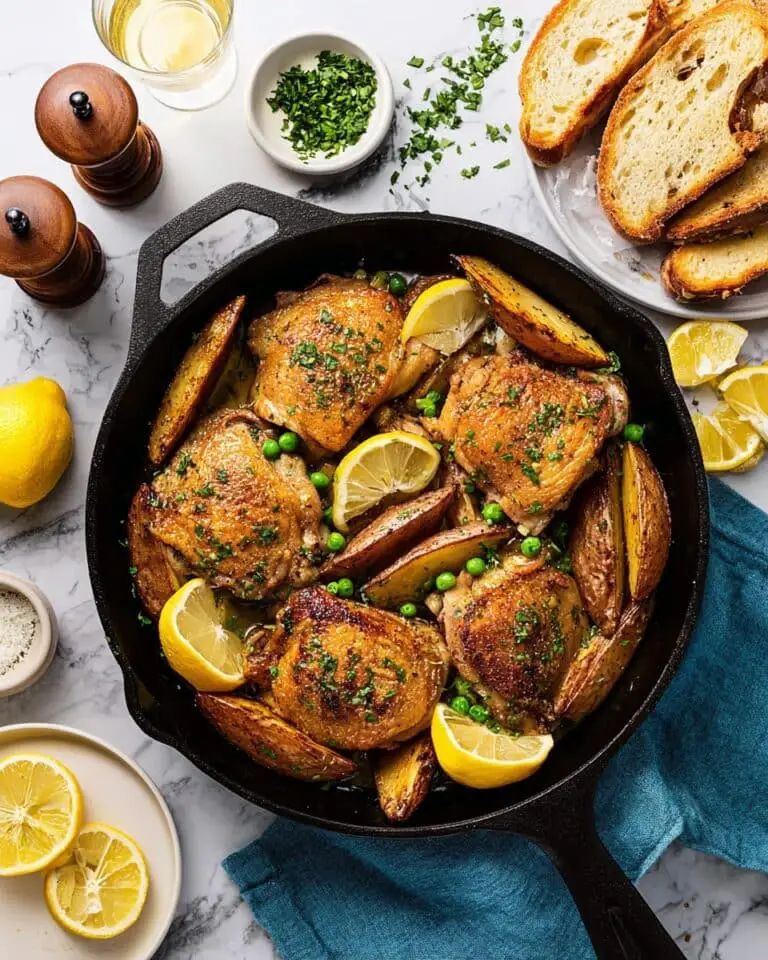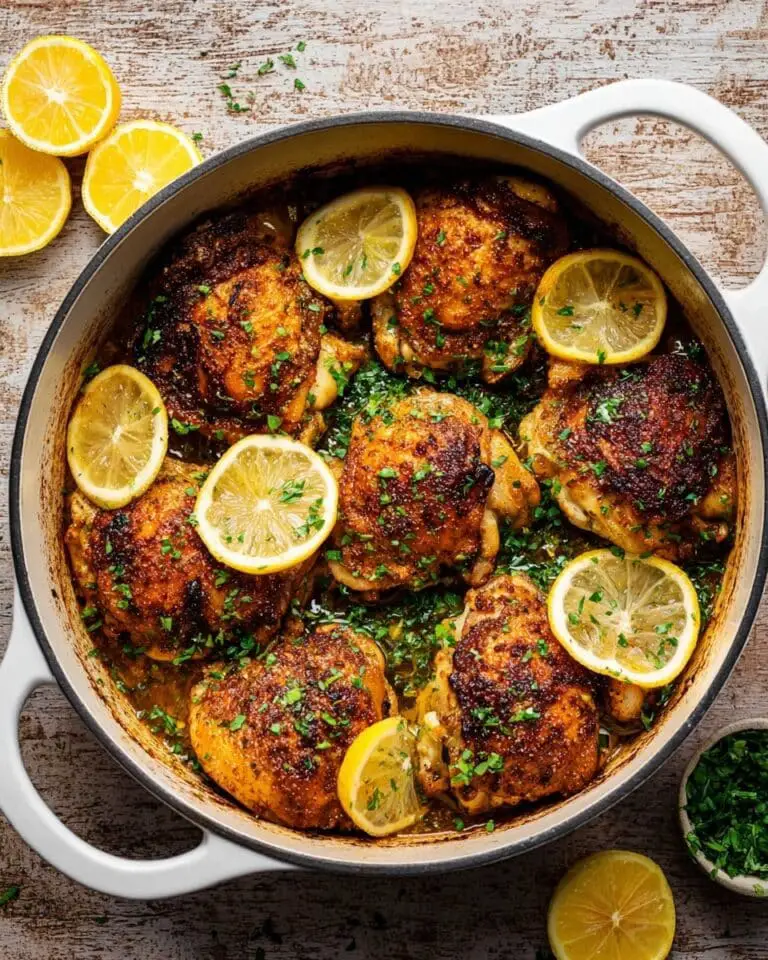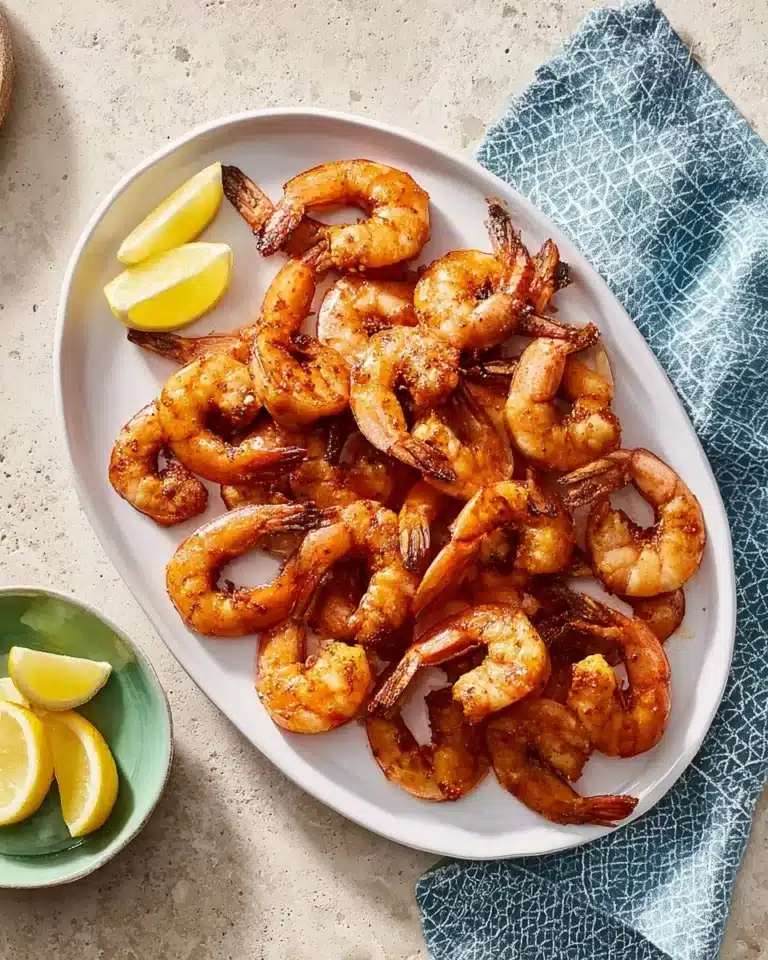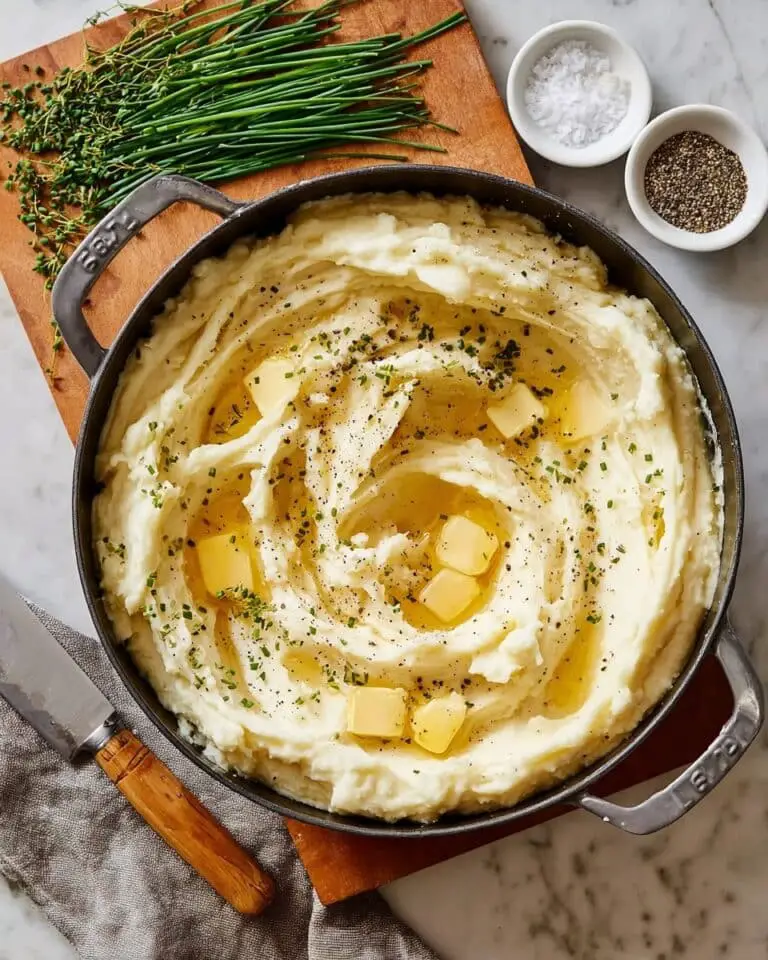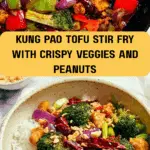If you love the vibrant, bold flavors of classic Chinese dishes but want a fresh, vegetarian twist, this Kung Pao Vegetables Recipe is your new go-to. It’s packed with colorful, crisp vegetables, tender golden tofu, and a perfectly balanced sauce that brings sweet, savory, and spicy notes all together in one irresistible bowl. Whether you’re cooking for family, friends, or just treating yourself, this dish will quickly become a beloved favorite that’s as satisfying as it is delicious.
Ingredients You’ll Need
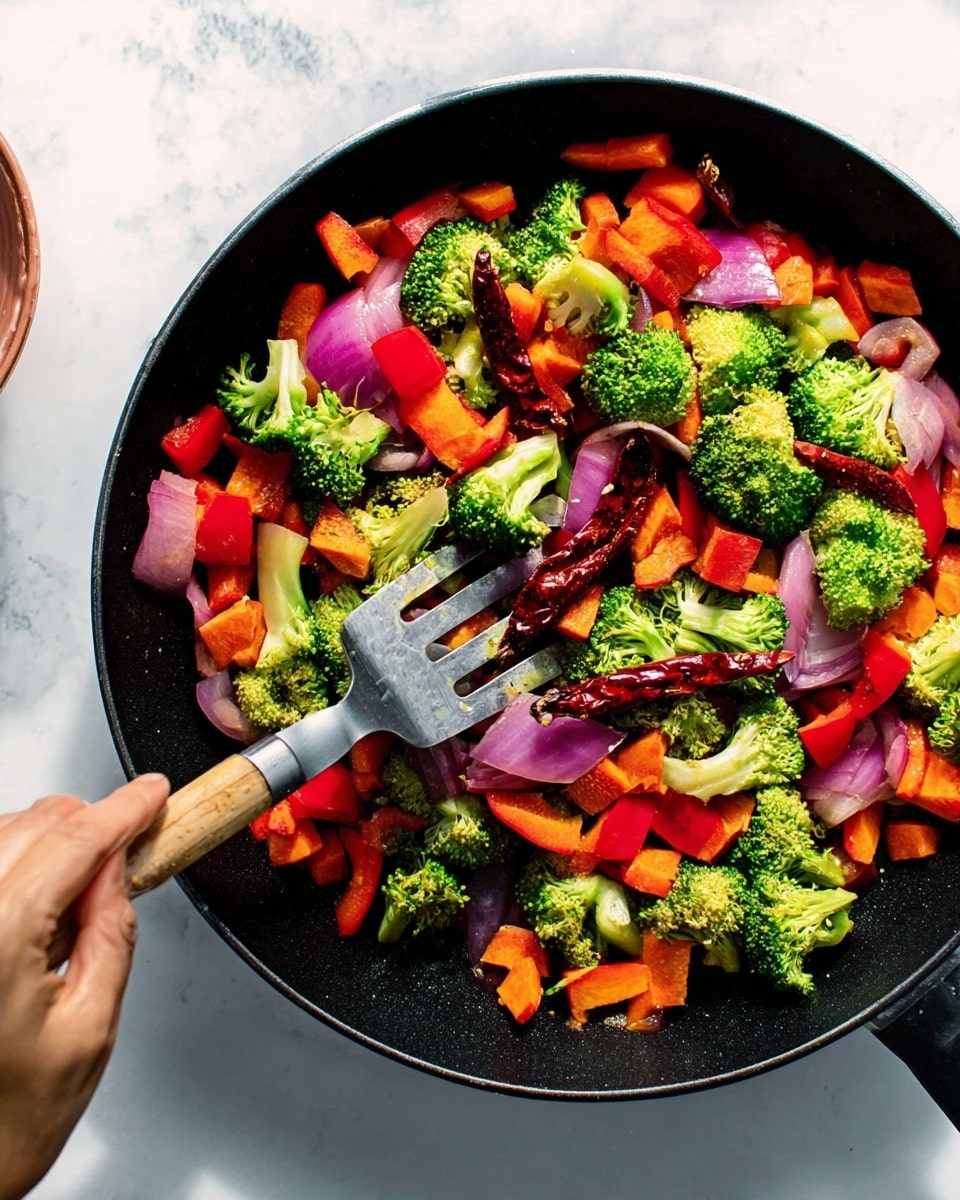
The beauty of this Kung Pao Vegetables Recipe lies in its simple but thoughtfully chosen ingredients. Each one plays a vital role in creating a harmonious balance of texture, flavor, and color that makes the dish so special.
- Grapeseed oil: A neutral oil perfect for high-heat sautéing that doesn’t overpower the dish.
- Extra-firm tofu: Provides a hearty protein base that crisps up beautifully without falling apart.
- Red onion: Adds a slight sweetness and a hint of sharpness to brighten the dish.
- Broccoli florets: Give a fresh crunch and lovely green color, packed with nutrients.
- Red bell pepper: Around ¾-inch pieces provide sweetness and vibrant color.
- Carrots: Sliced into rounds, they add a subtle earthiness and a satisfying bite.
- Celery stalks: Cut into half-moons, celery brings an aromatic crispness to the mix.
- Dried red Chinese chiles: The key to that signature kick, adjusted to your preferred spice level.
- Peanuts: Roasted peanuts add a crunchy texture and nutty flavor to finish.
- Black pepper: Enhances heat and depth, customized to taste.
- Cooked jasmine rice: The perfect fragrant bed to soak up all the sauce.
- Tamari (or soy sauce): Brings umami and saltiness.
- Minced ginger: Adds warmth and zing.
- Minced garlic: Gives that irresistible savory kick.
- Rice vinegar: Provides a touch of acidity to balance sweetness.
- Toasted sesame oil: Infuses a rich, nutty aroma into the dish.
- Brown sugar: Softens the heat with a mellow sweetness.
- Cornstarch: Helps thicken the luscious sauce.
- Vegetable broth: Creates a flavorful base for the sauce to come together smoothly.
How to Make Kung Pao Vegetables Recipe
Step 1: Prepare the Sauce
Start by combining tamari, minced ginger, garlic, rice vinegar, toasted sesame oil, brown sugar, and cornstarch in a medium bowl. Whisk these ingredients together until the mixture is completely smooth. Then, stir in the vegetable broth to create a balanced sauce that is packed with sweet, tangy, and savory notes. This foundation is what brings all the flavors together perfectly.
Step 2: Cook the Tofu
In a hot 12-inch skillet, heat the grapeseed oil over medium-high heat. Carefully crumble the extra-firm tofu into the pan and sauté for about 8 minutes until it turns mostly golden brown. This step ensures the tofu develops a delightful texture with a bit of crispness outside while staying tender inside. Once cooked, transfer the tofu to a bowl and toss it with three tablespoons of the prepared sauce to infuse it with flavor.
Step 3: Stir-Fry the Vegetables
Using the same skillet without cleaning it, add an additional tablespoon of grapeseed oil and raise the heat to medium-high. Add the chopped red onion, broccoli florets, red bell pepper, carrot rounds, celery slices, and dried red Chinese chiles. Sauté these vegetables until they are tender-crisp, about five minutes. This brief cooking time keeps their vibrant colors and offers a perfect contrast of textures in the dish.
Step 4: Combine and Finish
Reduce the heat to medium, then add the tofu and the remaining sauce to the skillet. Toss everything well so that the tofu and vegetables are evenly coated. Cook, stirring frequently, until the sauce thickens beautifully, about two minutes. Finally, stir in the roasted peanuts for crunch, then season with black pepper to taste for an extra little heat boost. Your Kung Pao Vegetables Recipe is now ready to be served atop fragrant jasmine rice.
How to Serve Kung Pao Vegetables Recipe
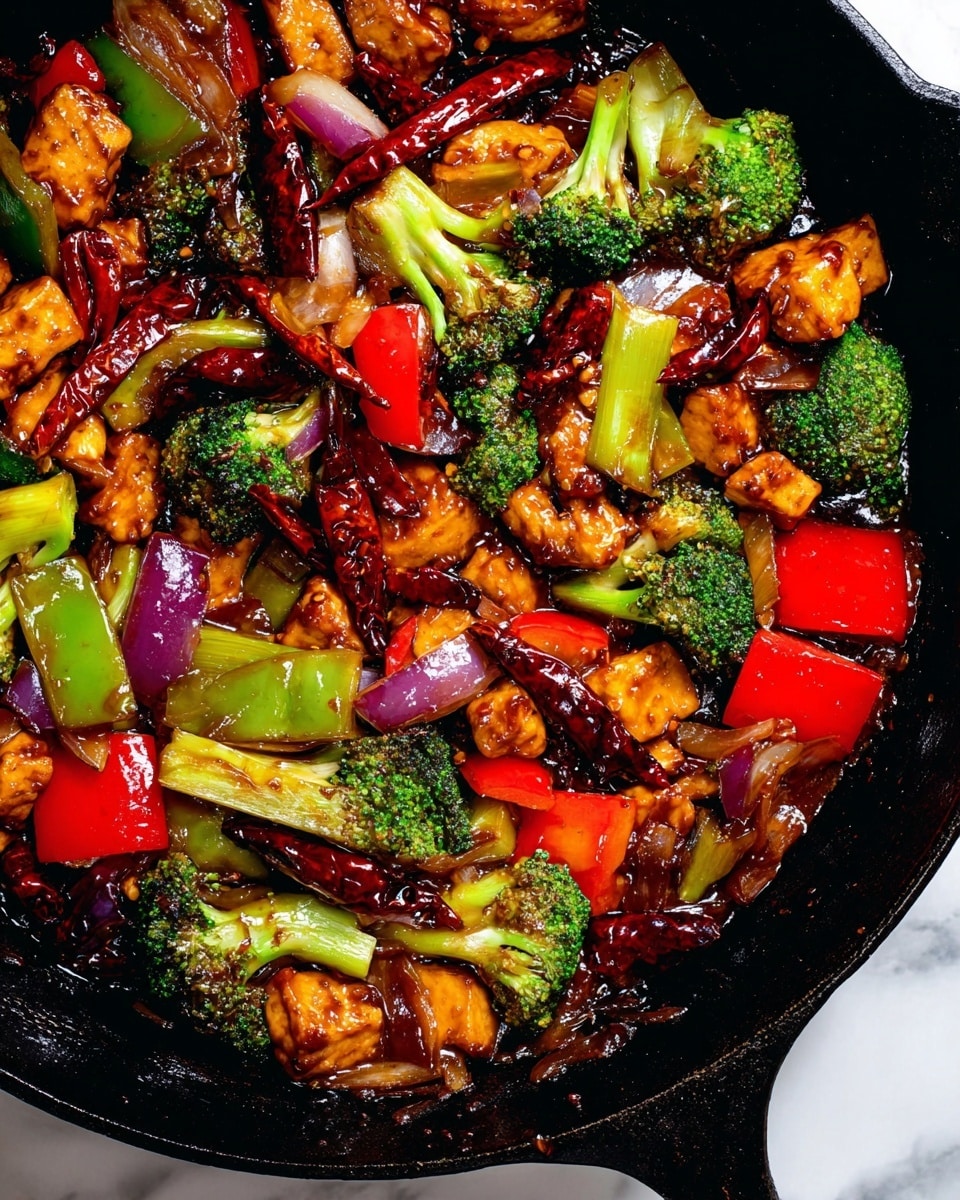
Garnishes
To elevate the presentation and enhance flavors, consider garnishing your Kung Pao Vegetables with chopped green onions for a fresh bite or a sprinkle of toasted sesame seeds for a little extra nutty texture. Fresh cilantro leaves can add a bright herbal punch that complements the sauce perfectly. These finishes make each bite vibrant and satisfying.
Side Dishes
This dish shines wonderfully alongside simple steamed rice or even cauliflower rice for a lighter option. For a complete meal, pair it with an Asian-inspired cucumber salad or some delicate steamed dumplings. The crisp and spicy profile of the Kung Pao Vegetables balances beautifully with milder sides that offer cleansing, refreshing notes.
Creative Ways to Present
For a fun twist on serving, try plating the Kung Pao Vegetables over a bed of crispy fried rice cakes instead of plain rice. Another idea is to use it as a filling for lettuce wraps, which add a cool, crunchy contrast. If you’re hosting a gathering, serve the dish family-style in a large colorful bowl to invite sharing and lively conversation about this delicious Kung Pao Vegetables Recipe.
Make Ahead and Storage
Storing Leftovers
After enjoying your meal, store any leftovers in an airtight container and refrigerate. The tofu and vegetables maintain their flavor well for up to 3 days. Keeping the sauce-thickened mixture together ensures every bite stays full of that fantastic, balanced taste.
Freezing
While freezing is possible, it’s best to freeze the tofu and sauce separately from the vegetables if you want to preserve their texture. The sauce freezes well, but some of the veggies can become a bit softer after thawing. Use freezer-safe containers or bags, and consume within 1 to 2 months for best flavor.
Reheating
When ready to enjoy leftovers, gently reheat the Kung Pao Vegetables in a skillet over medium heat to revive the crispness of the vegetables and tofu. Stir frequently to prevent sticking. Serve with fresh jasmine rice heated separately for the best experience that tastes nearly as fresh as when first made.
FAQs
Can I make this Kung Pao Vegetables Recipe spicy or mild?
Absolutely! Adjust the amount of dried red Chinese chiles according to your heat preference. You can start with fewer chiles for a mild version or add more to really turn up the spice.
Is this recipe gluten-free?
It can be, as long as you use tamari sauce labeled gluten-free instead of traditional soy sauce. Always check the labels to be sure, especially for the sauce ingredients.
Can I substitute tofu with other proteins?
Definitely. While extra-firm tofu works brilliantly here, you can swap it for tempeh or seitan if you prefer. Just keep in mind each will slightly change the texture and flavor profile.
What’s the best way to keep the vegetables crisp?
Don’t overcook the vegetables during the stir-fry step. Cooking them only until tender-crisp helps retain their bright color and crunch, giving the dish its delightful texture contrast.
Can I prepare any parts of this recipe ahead of time?
Yes! You can prepare the sauce ahead and store it in the fridge. Also, chopping the vegetables in advance saves time on cooking day. Just keep them separate and dry to ensure freshness.
Final Thoughts
This Kung Pao Vegetables Recipe is a fantastic way to enjoy fresh veggies and bold flavors in a dish that’s as comforting as it is exciting. It’s great for weeknight dinners or impressing guests with a vibrant vegetarian dish full of personality. I encourage you to give it a try—you’ll love how simple ingredients come together to create something truly unforgettable.
Print
Kung Pao Vegetables Recipe
- Total Time: 25 minutes
- Yield: 4 servings
- Diet: Vegetarian
Description
This vibrant Kung Pao Vegetables recipe features crispy tofu and a colorful medley of stir-fried vegetables tossed in a savory, slightly sweet, and tangy homemade sauce. Enhanced with toasted peanuts and dried red Chinese chiles, this dish offers the classic bold flavors of traditional Kung Pao in a wholesome vegetarian version, perfect for a quick and delicious weeknight dinner.
Ingredients
For the Tofu and Stir-Fry
- 2 tablespoons grapeseed oil (or other neutral oil)
- 16 ounces extra-firm tofu
- 1 tablespoon grapeseed oil (or other neutral oil)
- 1 small chopped red onion (about 1.5 cups)
- 2 cups small broccoli florets
- 1 chopped red bell pepper (or yellow or orange, about ¾-inch pieces)
- 2 sliced carrots (cut into ¼-inch thick rounds)
- 2 stalks sliced celery (cut into ⅓-inch half-moons)
- 5 to 15 dried red Chinese chiles
- ½ cup roasted peanuts
- Black pepper to taste
For the Sauce
- 6 tablespoons tamari (or soy sauce)
- 2 tablespoons minced fresh ginger
- 2 tablespoons minced garlic
- 2 tablespoons rice vinegar
- 2 tablespoons toasted sesame oil
- 2 tablespoons brown sugar (dark or light)
- 2 tablespoons cornstarch
- 1 cup vegetable broth
To Serve
- 4 cups cooked jasmine rice (or other rice)
Instructions
- Make Sauce: In a medium bowl, combine 6 tablespoons tamari, 2 tablespoons minced ginger, 2 tablespoons minced garlic, 2 tablespoons rice vinegar, 2 tablespoons toasted sesame oil, 2 tablespoons brown sugar, and 2 tablespoons cornstarch. Whisk the mixture until completely smooth. Then stir in 1 cup vegetable broth to create a smooth, flavorful sauce.
- Cook Tofu: Heat 2 tablespoons grapeseed oil in a 12-inch skillet over medium-high heat. Carefully crumble in 16 ounces extra-firm tofu and sauté it, stirring occasionally, until it develops a mostly golden brown color, about 8 minutes. Remove tofu from the skillet, transfer it to a bowl, toss with 3 tablespoons of the prepared sauce, and set aside to marinate briefly.
- Start Stir Fry: Return the skillet to medium-high heat without cleaning it. Add 1 tablespoon grapeseed oil, then scatter the chopped red onion, broccoli florets, chopped bell pepper, sliced carrots, sliced celery, and dried red Chinese chiles into the skillet. Sauté the vegetables, stirring frequently, until they are tender-crisp, approximately 5 minutes.
- Finish Stir Fry: Reduce the heat to medium and add the marinated tofu along with the remaining sauce to the skillet. Toss everything well to coat the vegetables and tofu evenly. Continue to cook, stirring frequently, until the sauce thickens and glazes the ingredients, about 2 minutes. Stir in ½ cup roasted peanuts and season with black pepper to taste, adding more heat if desired.
- Serve: Divide the cooked jasmine rice evenly into four serving bowls. Top each bowl with the saucy Kung Pao vegetables and tofu mixture. Serve immediately for best texture and flavor.
Notes
- Note 1: Use extra-firm tofu for best texture that holds up during sautéing.
- Note 2: Broccoli florets should be small for even cooking and better texture.
- Note 3: Adjust the number of dried red Chinese chiles based on preferred spiciness; start with 5 for mild heat and go up to 15 for more spice.
- Note 4: Roasted peanuts add a crunchy texture and toasty flavor; you can use unsalted or lightly salted based on preference.
- Note 5: Use a 12-inch skillet or wok for best heat distribution and space to stir fry ingredients.
- Prep Time: 10 minutes
- Cook Time: 15 minutes
- Category: Main Dish
- Method: Stovetop
- Cuisine: Chinese

